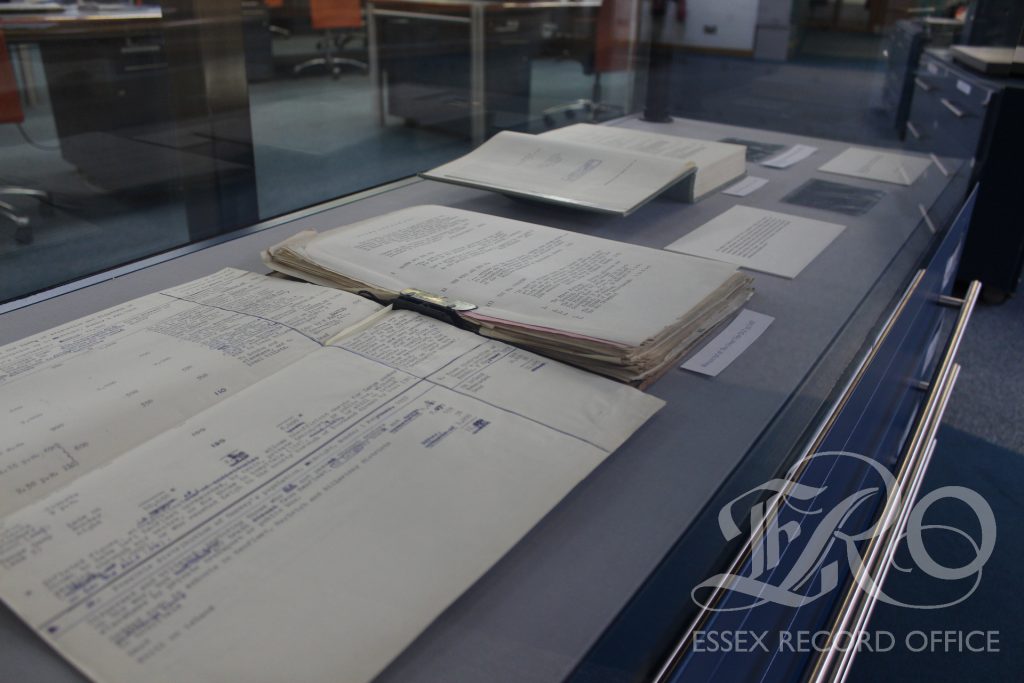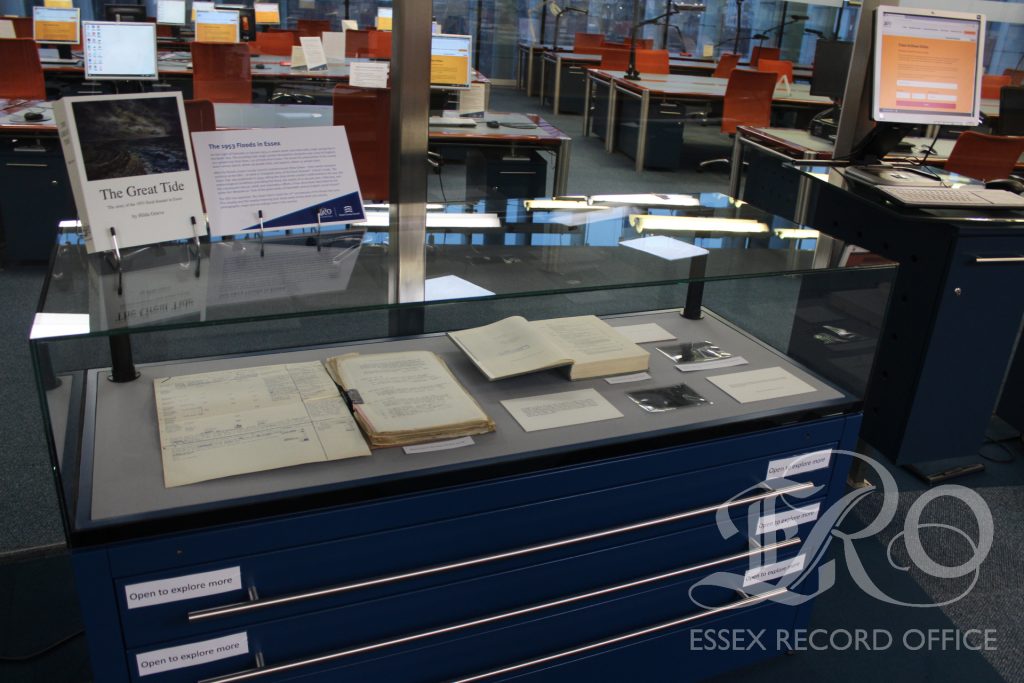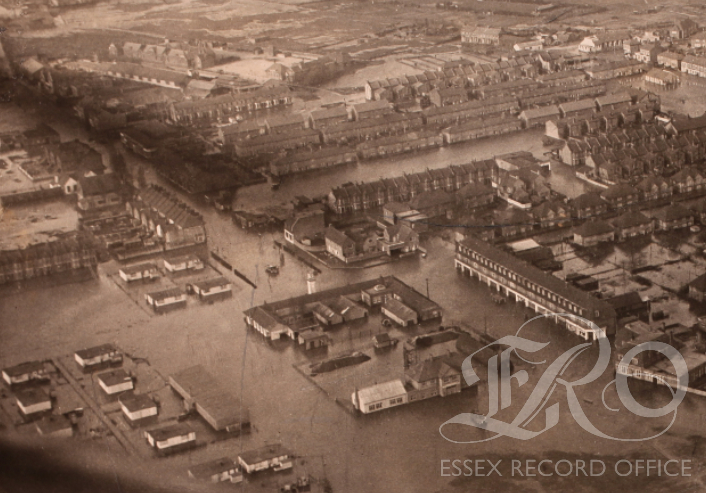
On the night of Saturday 31 January 1953, a severe storm coincided with a high spring tide in the North Sea. The resulting tidal surge caused devastation along the east coast of England. 307 people were killed, 120 of them from Essex. The worst hit communities in the county were Canvey Island, where 58 people died, and Jaywick, where 37 people lost their lives.
October 2018 seems like a long time ago. Our events team was busy planning our ERO Presents series of monthly talks. As our attention turned to booking in a talk from Janet Walden from the Canvey Community Archive about the 1953 floods, we recalled that there had been some local demand to re-print a book called “The Great Tide” – and wouldn’t it be a good idea to ask Janet what she thought, and whether she could find us anywhere to have a small, understated book launch on Canvey.
The ERO team arranged for one of our library copies to be dismantled, scanned, and for the PDFs to be sent to the printers. We were aiming for the book to be launched in the February of 2020. I’m sure that we don’t need to relate what happened next.
In 2022, with the world re-opened, we started planning the launch of “The Great Tide” for February 2023, to coincide with the 70th anniversary of the events that it describes. Alongside that launch, we aimed to commemorate the event more widely with the communities who were at the heart of it.
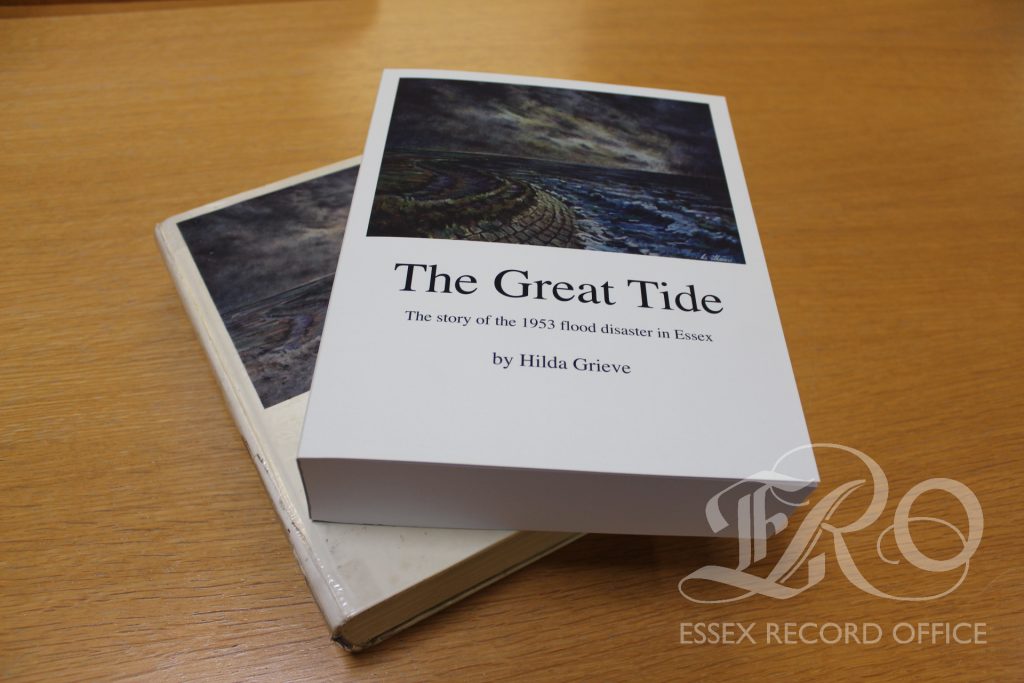
But what is so important about this book, “The Great Tide”?
“The Great Tide” was written and researched by Hilda Grieve, then Senior Assistant Archivist at the Essex Record Office. It was commissioned by Essex County Council shortly after the flood, with the intention of documenting the “complete story” of the disaster. Essentially this would be Essex County Council’s official report into the floods, but in the writing, it became so much more.
Published in 1959, “The Great Tide” told the story of the county’s relationship to the sea, the meteorological conditions preceding the flood, the events of 31 January and 1 February, and the subsequent rescue, relief, and restoration efforts in meticulous detail, drawn from six years of careful, patient research. It has since been described by the writer Ken Worpole as “one of the great works of twentieth century English social history”.
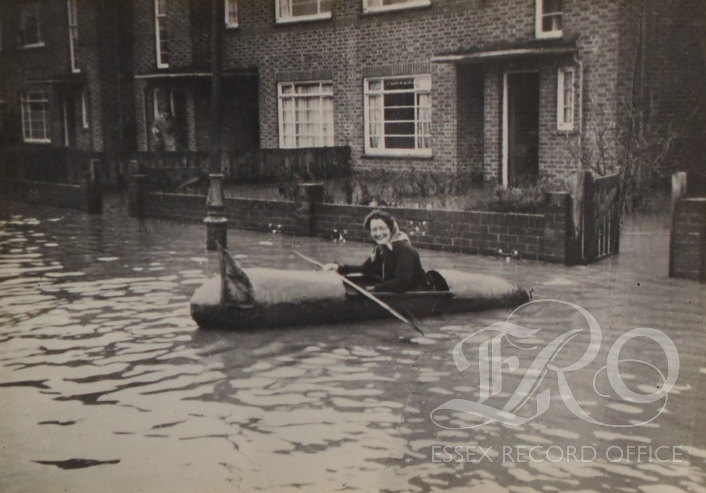
The Essex Record Office is privileged to hold Hilda’s original notes and early manuscripts, along with many of the documents that she would have had access to. Robert, one of our Archive Assistants, has pulled together a selection of these documents to display in our Searchroom.
As he found, there is substantially more in the archive than can be displayed. Hilda’s typescript itself comprises about eleven or twelve foolscap folders, full to capacity with her timetables and diagrams, all hammered out by typewriter and then reorganized in scraps on the page – the original Word formatting. Also illuminating were the more exacting records of people who lived through the flood. Still beautifully preserved in the collection of the South Benfleet branch of the Women’s Royal Voluntary Service are their case cards of missing persons, evacuees, primary school children, all meticulously accounted for, along with the faded newsprint clippings and telegrams of thanks from flood victims.
-
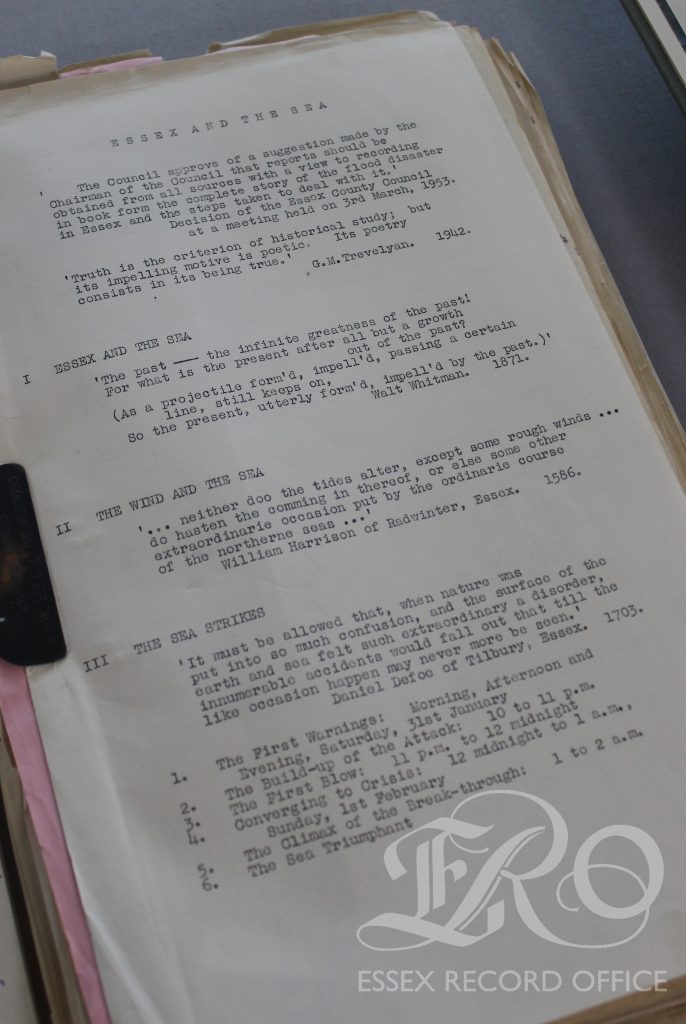
First page of Hilda’s manuscript -
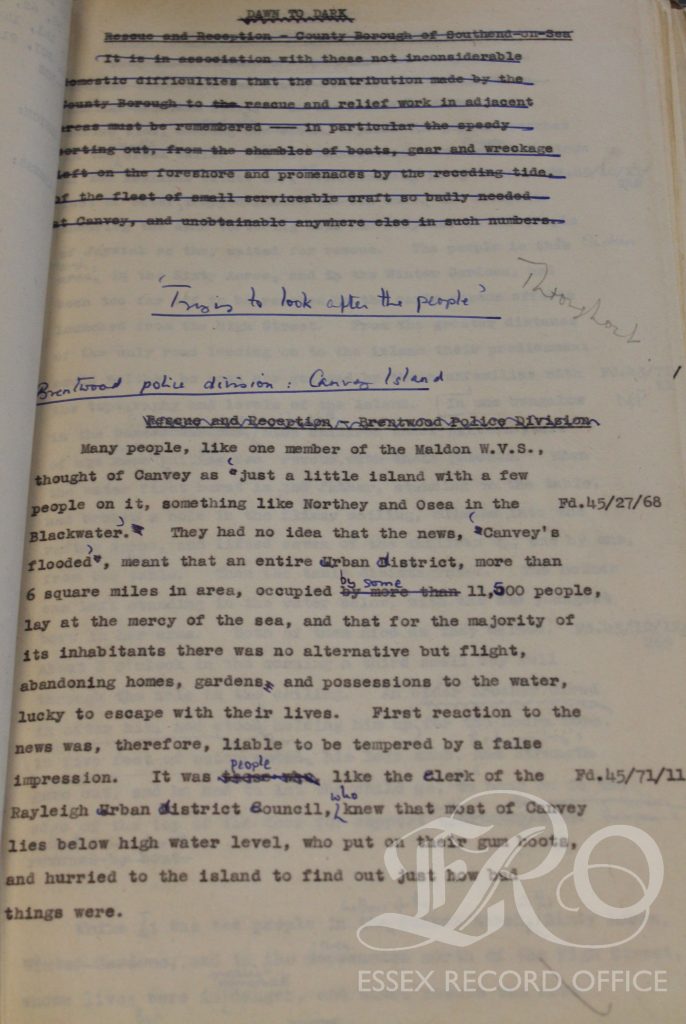
Hilda’s manuscript with amendments
Since the publication of “The Great Tide”, the Essex Record Office as well as our partners like Canvey Community Archive and Harwich Museum have continued to collect material to add to the wealth of knowledge about the events of the evening of 31 January 1953, including photographs, radio broadcasts, and oral histories.
As we’ve explored in another blog post (as well as previous blog posts, here and here), the reminiscences of people who survived the flood and took part in the rescue effort across the county are particularly moving. You can listen to recordings preserved in the Essex Sound and Video Archive at the listening post in our Searchroom.
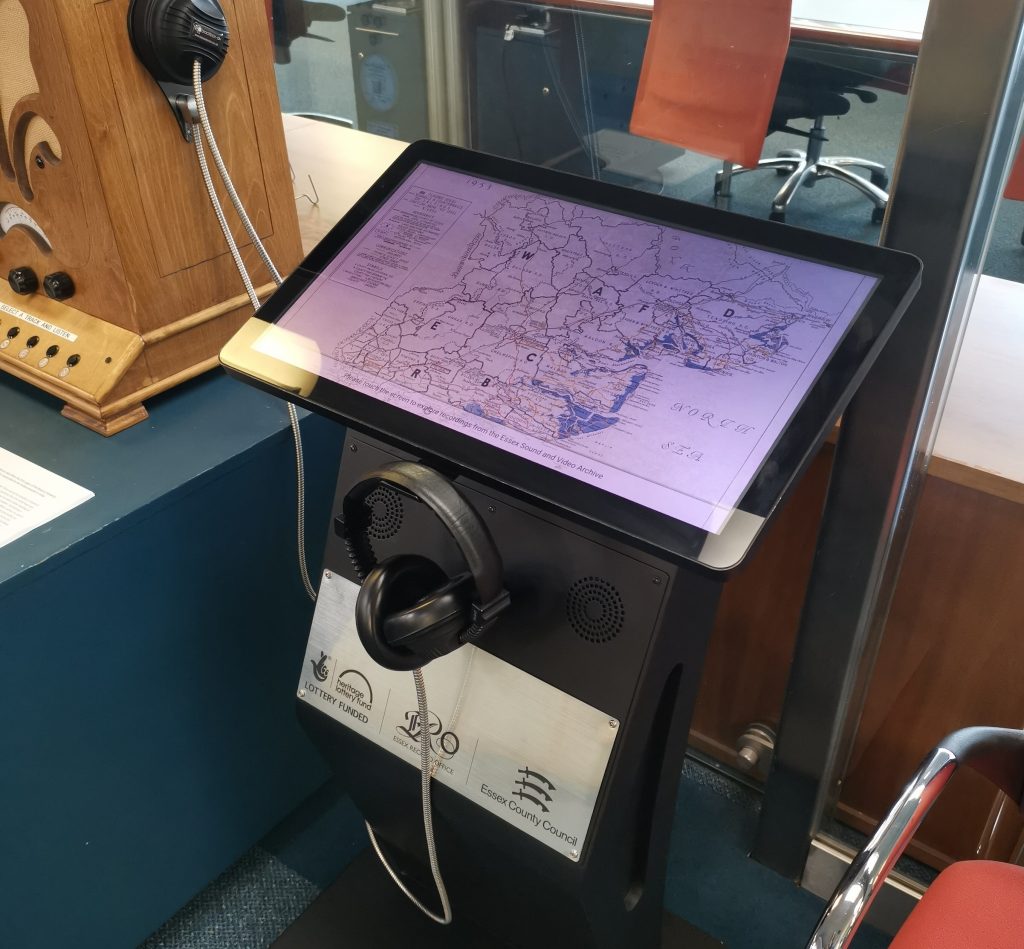
And so, to the events we have planned for February 2023.
Wednesday 1st February: We will be at Canvey Library alongside the Canvey Community Archive, the Town Council, and representatives from the Environment Agency, Essex County Council and the National Coastwatch to commemorate the 70th anniversary. We will have a display with us including audio, video and maps of the area at the time of the flood. As part of the commemoration, a new plaque will be unveiled in memory of the victims at 2:00pm. We will also have copies of our re-print of “The Great Tide” available for sale for the first time at a special launch price of £15.00.
Thursday 2nd February: We are inviting pupils of the primary schools on Canvey to visit us at the library to view the displays and to talk to members of the Community Archive team. All of the schools on Canvey have been provided with a specially produced education pack looking at the floods.
Saturday 4th February: We will be taking our display to Harwich Museum for the day, alongside their 1953 exhibition. Local schools have been invited to visit us again on the day and have been provided with their own specially developed education pack. You will also be able to pick up your copy of “The Great Tide” from us on the day.
Copies of “The Great Tide” are available to purchase from our online shop while stock lasts https://museumshops.uk/product/the-great-tide-the-story-of-the-1953-flood-disaster-in-essex/
If you would like to find out more about the 1953 flood disaster and Hilda Grieve’s book ‘The Great Tide’, listen to the recent BBC Radio 4 documentary, Learning from the Great Tide.

